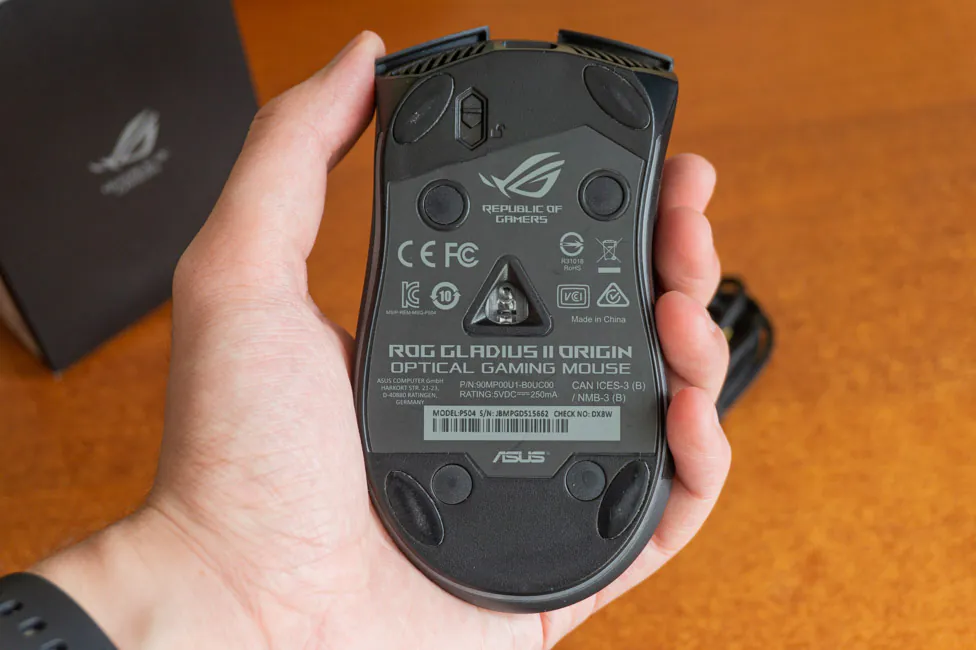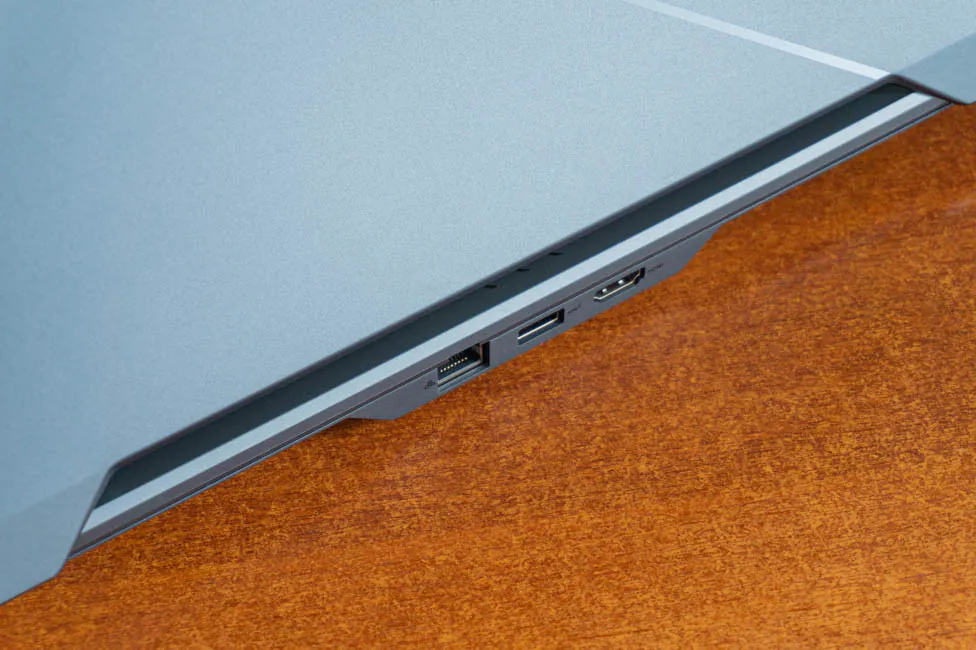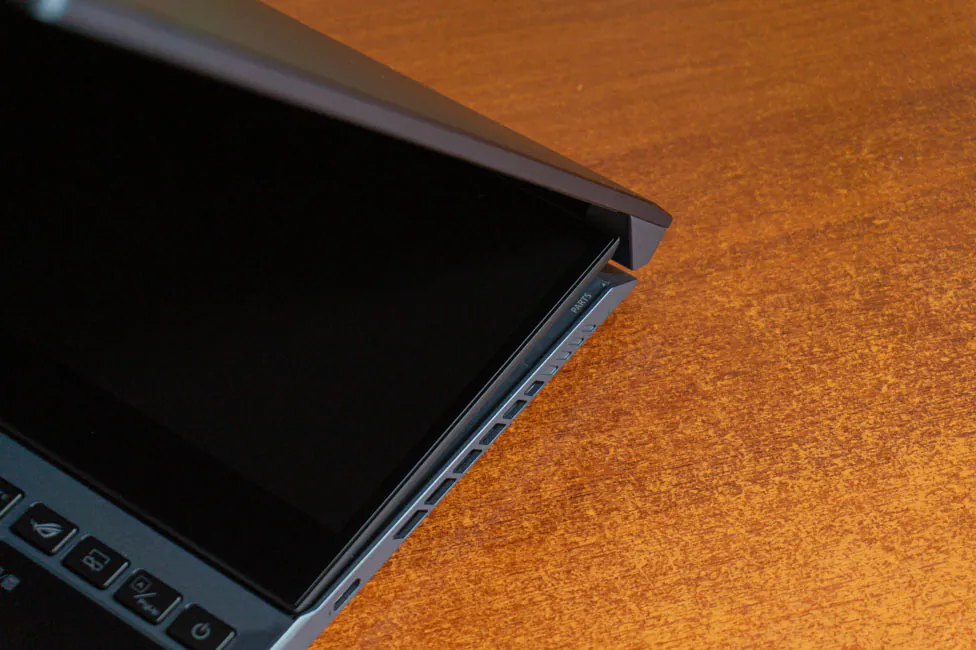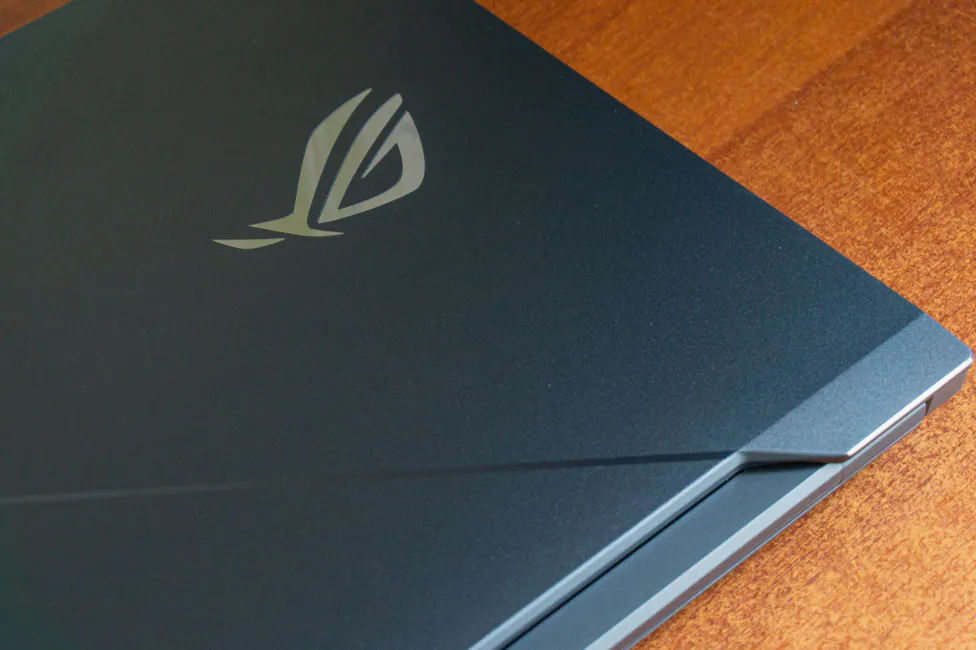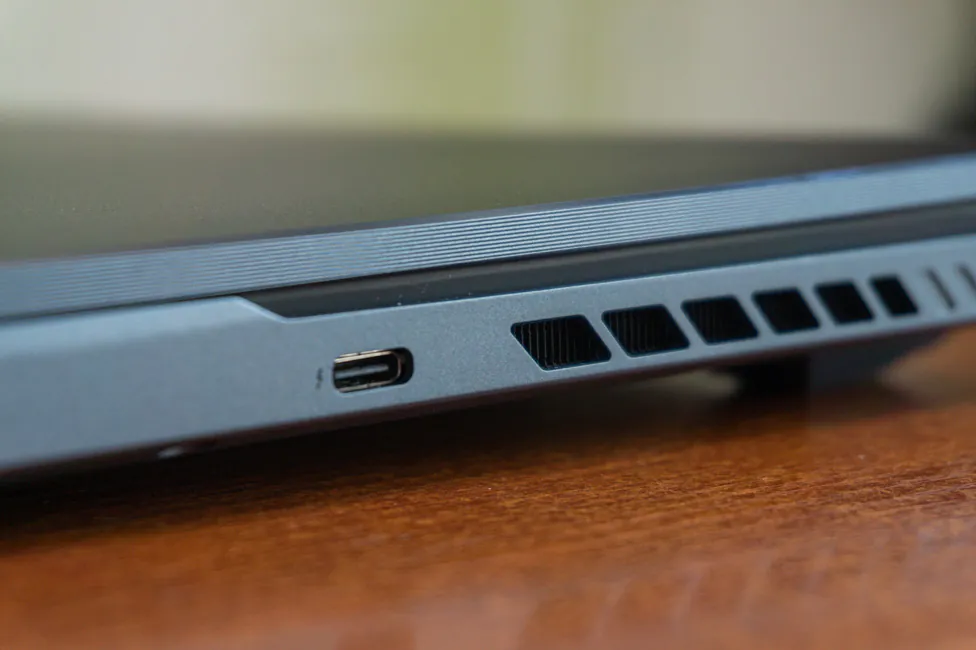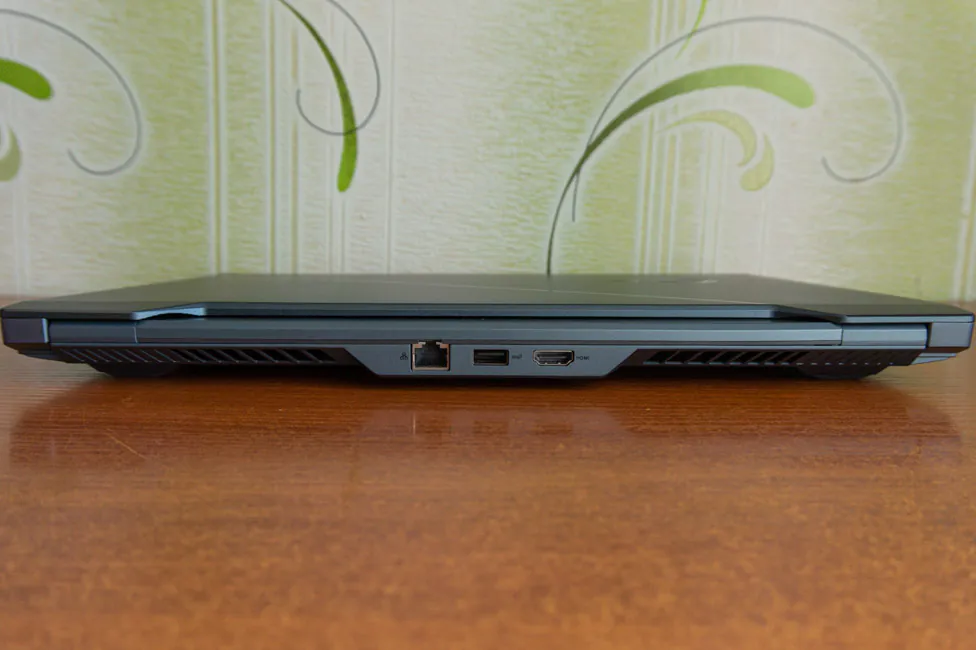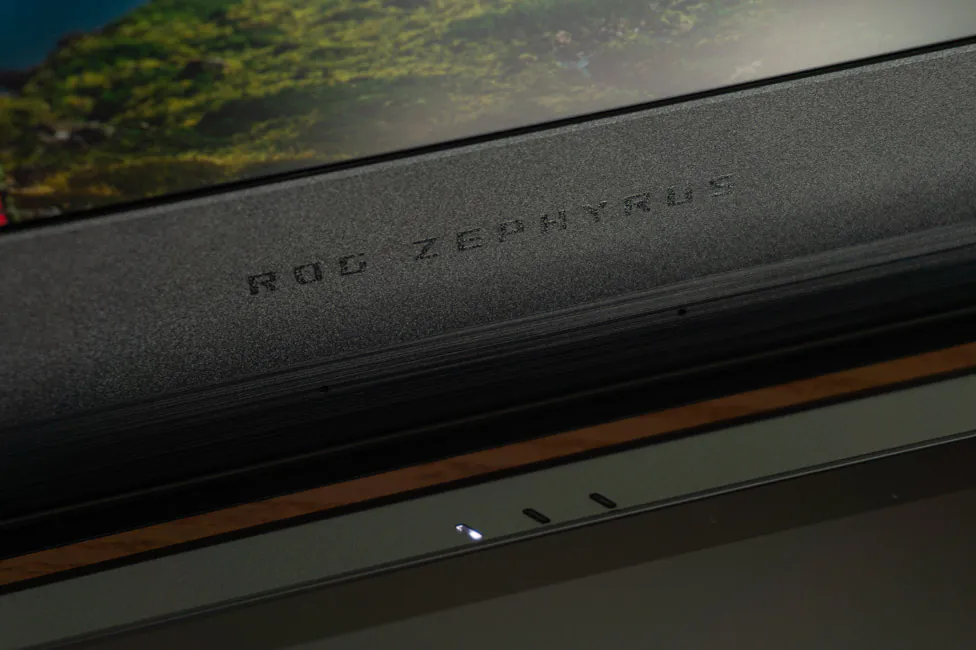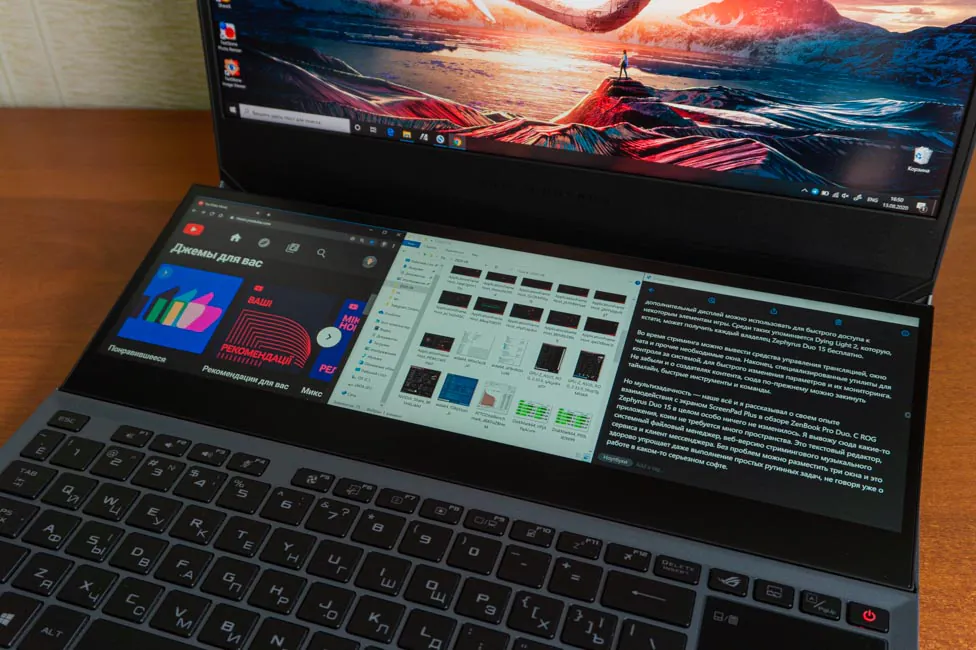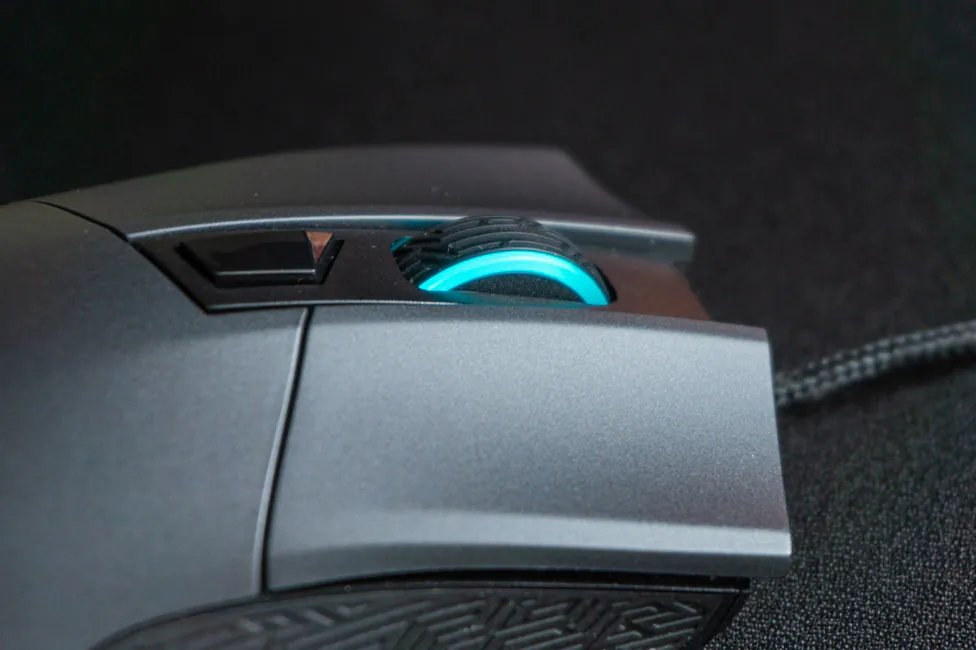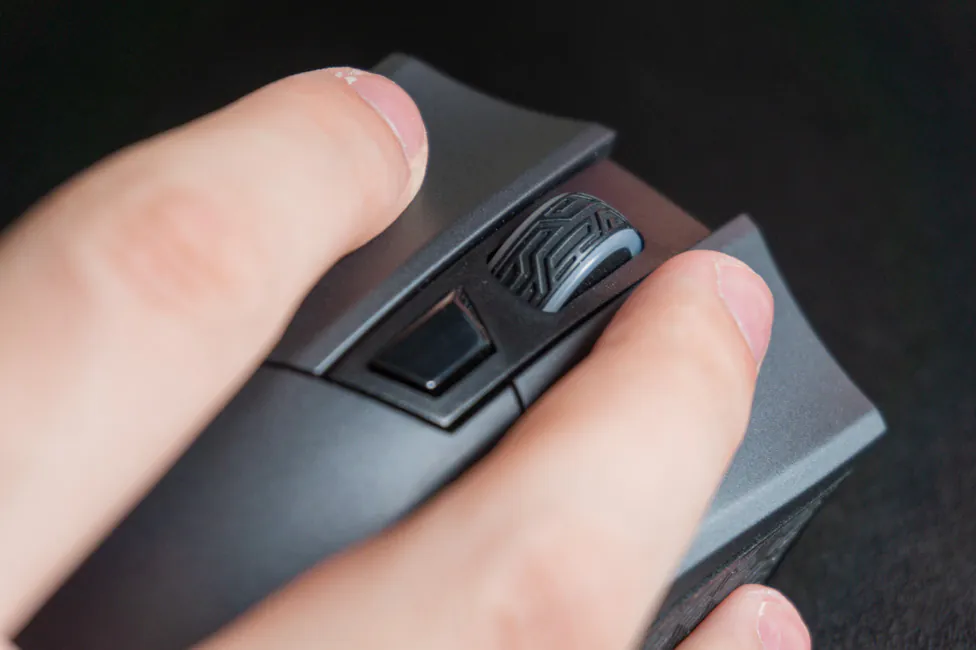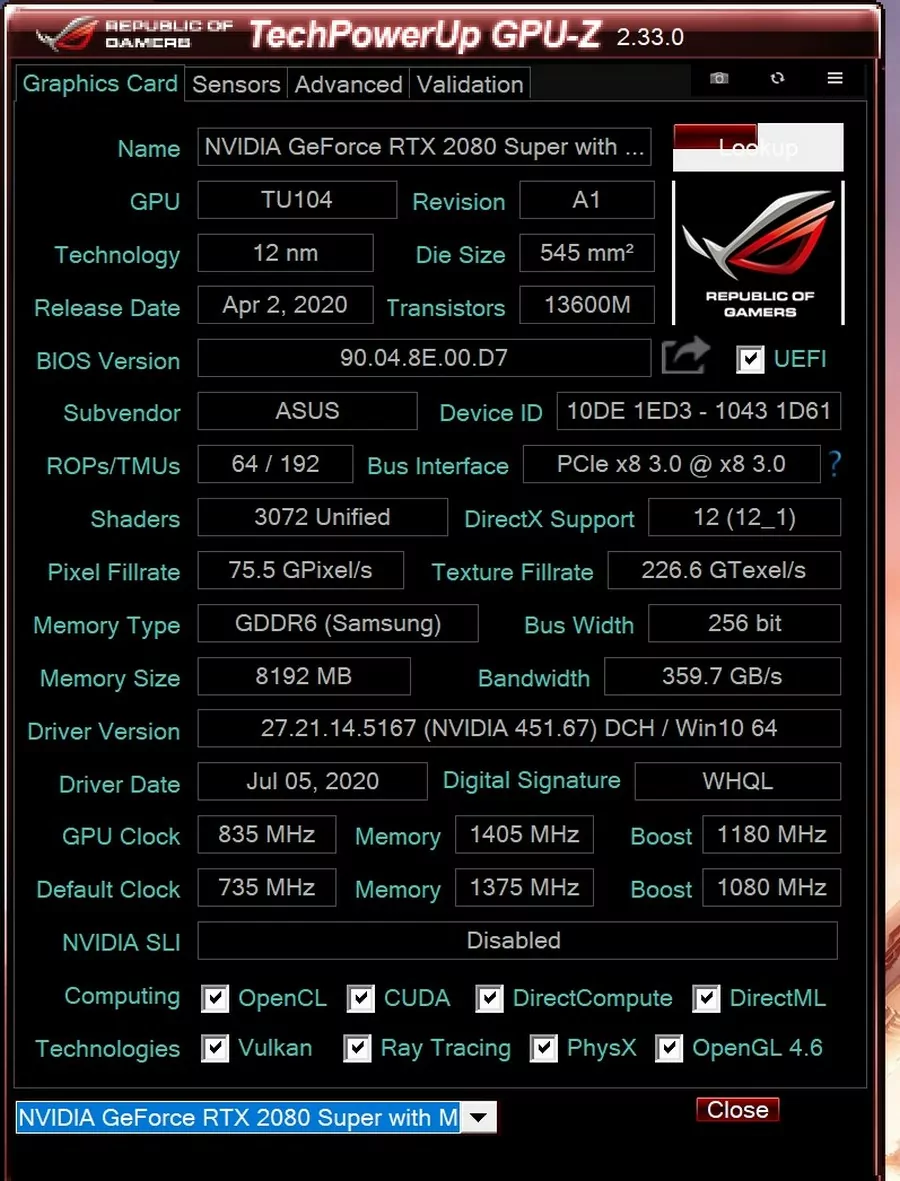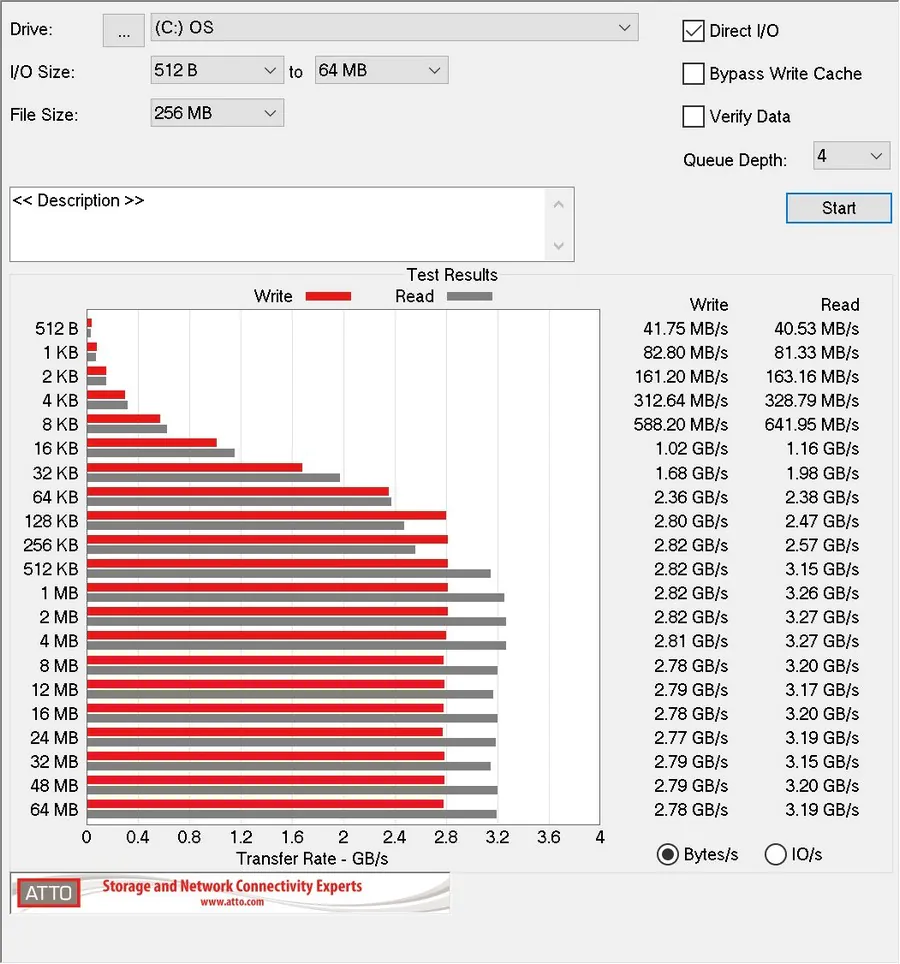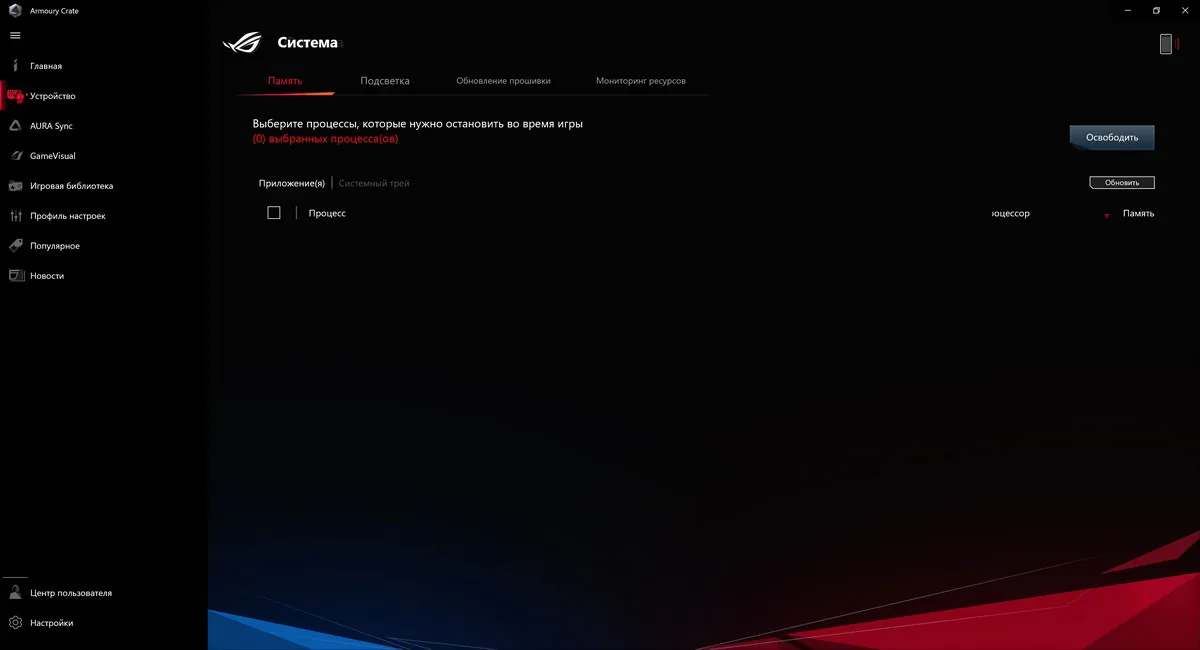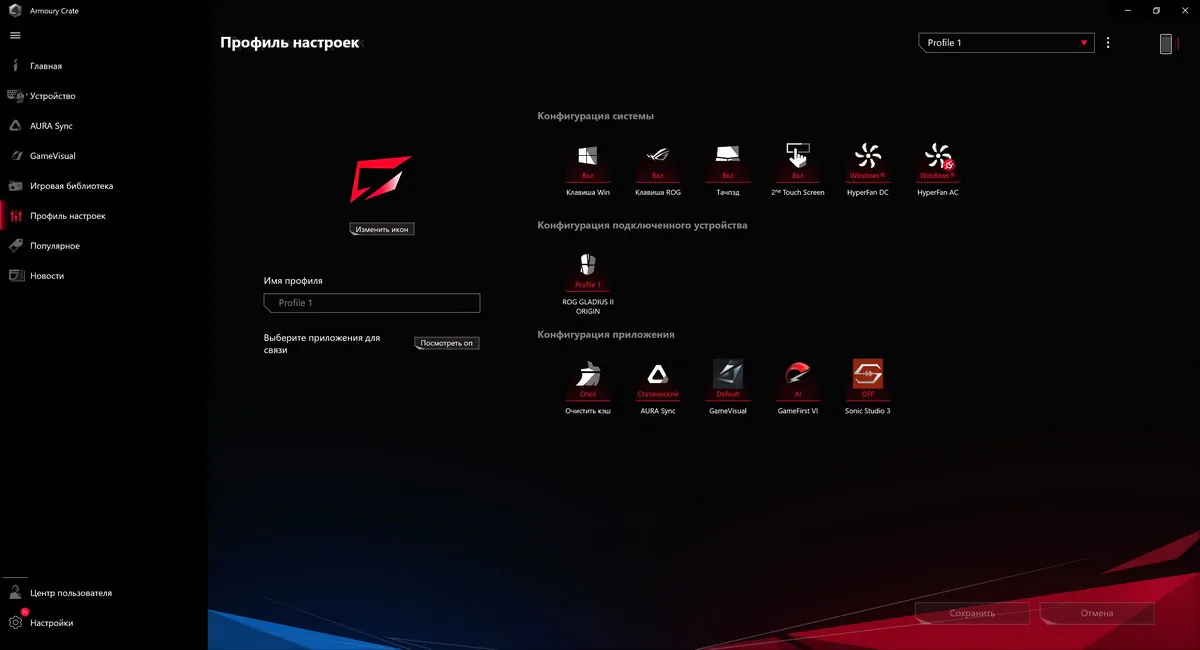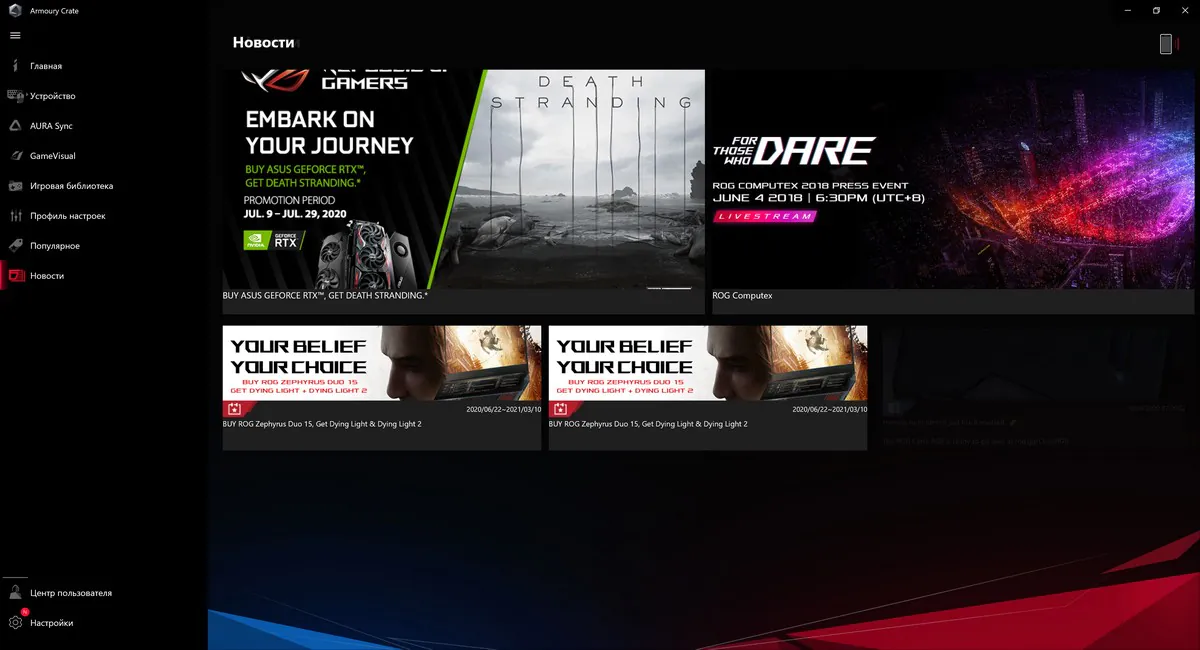© ROOT-NATION.com - Use of content is permitted with a backlink.
This spring, we got acquainted with a rather unique ASUS ZenBook Pro Duo UX581GV, which we called “a laptop of the future”. It’s a powerful device, but it’s still more for work than games. But work is work, and now it’s time for games. Today we will again talk about a laptop with two screens, but this time from the Republic Of Gamers gaming series – ASUS ROG Zephyrus Duo 15. Let’s find out how ROG ScreenPad Plus helps with gaming.

ASUS ROG Zephyrus Duo 15 (GX550LXS-HC141R)
The top-end ASUS ROG Zephyrus Duo 15 arrived for our test. This is the GX550LXS model with the HC141R index, and its key characteristics are in the table below.
| Type | Gaming laptop |
| OS | Windows 10 Pro |
| Screens, inches | 15.6 + 14.1 |
| Coating type | Anti-glare |
| Resolution | 3840 × 2160 + 3840 × 1100 |
| Matrix type | IPS |
| Sensory | Auxiliary |
| Screen refresh rate, Hz | 60 |
| CPU | Intel Core i9-10980HK |
| Frequency, GHz | 2.4 – 5.3 |
| Number of processor cores | 8 cores, 16 threads |
| Chipset | Intel |
| RAM, GB | 32 |
| Maximum RAM, GB | 48 |
| Memory type | DDR4 |
| Memory frequency, MHz | 3200 |
| SSD, GB | 2 × 1024 M.2 NVMe PCIe 3.0 x4 with RAID 0 support |
| HDD, GB | – |
| Graphics adapter, memory | Discrete NVIDIA GeForce RTX 2080 SUPER Max-Q, 8 GB, GDDR6 + integrated Intel UHD Graphics 630 |
| External ports | 1 × USB 3.2 Gen2 Type-C with DisplayPort 1.4, Thunderbolt 3, Power Delivery;2 × USB 3.2 Gen 1 Type A;
1 × USB 3.2 Gen 2 Type A; 1 × HDMI 2.0b; 1 × 3.5mm microphone jack; 1 × 3.5mm combo audio jack (headphone + microphone); 1 × RJ45 |
| Card reader | – |
| WEB-camera | – |
| Backlit keyboard | + |
| The fingerprint scanner | – |
| Wi-Fi | 6, Gig + (802.11ax) |
| Bluetooth | 5.0 |
| Weight, kg | 2.4 |
| Size, mm | 360 × 268 × 20.9 |
| Body material | Aluminum |
| Body color | Gunmetal gray |
| Battery, W*h | 90 |
Configurations and cost
As befits a gaming laptop, it comes in several configurations. I do not know the exact number of them, but at the time of publication of this review, there is one base model on sale while the most powerful configuration labeled GX550LXS-HC141R is to arrive soon. Its detailed characteristics can be found in the table above. As for the base model, it is marked GX550LWS-HF101T and differs from the top model in several parameters.
The base model comes with a Full HD display with a refresh rate of 300 Hz, an Intel Core i7-10875H processor and an nVidia GeForce RTX 2070 Super Max-Q discrete graphics card, as well as 16 GB of RAM and just one terabyte SSD. On top of that, the edition of the operating system is also different – we have Windows 10 Home. The machine costs about $3612.
Top version with 4K display, but with a frequency of 60 Hz, an Intel Core i9-10980HK processor and an nVidia GeForce RTX 2080 Super Max-Q graphics card, with 32 GB of RAM and two terabyte SSD disks in a RAID 0 array with Windows 10 Pro on board will cost $4876.
I want to add that the main and invariable difference between the GX550LXS and GX550LWS lies only in the video card (RTX 2080 Super Max-Q and RTX 2070 Super Max-Q), even if the rest of the components can vary in different configurations of ASUS ROG Zephyrus Duo 15 in different markets.
A display with Full HD and 300 Hz can be found not only in the GX550LWS, but also in the GX550LXS and vice versa: a 4K panel with 60 Hz is also available in the GX550LWS. The same goes for more RAM – it can be up to 48 GB. Same for memory – you get either 2 SSDs 1 TB in RAID 0 or one 1 TB or 512 GB disk. With processors, it’s a little different: GX550LWS comes only with Intel Core i7-10875H, but GX550LXS can be found in both i7-10875H and i9-10980HK.
In general, there is variability, but again, the availability depends on the specific market.
What’s in the box
ASUS ROG Zephyrus Duo 15 comes with a lot of stuff, which is only logical, considering that we’re talking about a very expensive device. A large, unassuming cardboard box contains two smaller boxes. It reminds me of ZenBook Pro Duo UX581GV, only the boxes are not made of “premium” material.
In the box with the ROG Zephyrus Duo 15 itself we find the documentation and a wrist rest that is noticeably different from the one that came with the Pro Duo. But I will tell you more about it in the corresponding section of the review.
The second box contains a massive 240W PSU with a separate power cable, as well as a separate box with the ASUS ROG Gladius II Origin gaming mouse. It itself is also not cheap.
Not only the device configuration depends on the region, but also the contents of the box. On the manufacturer’s website, in addition to the above accessories, we also see ROG Ranger backpack, ROG Delta gaming headset, ROG GC21 external webcam, ZenPower Pro PD external battery and a more compact 65W charger.

Design, materials, construction and build quality
ASUS ROG Zephyrus Duo 15 looks… like a gaming laptop. The manufacturer tried to make the case stricter and more classy, but ROG is ROG.
A large mirrored logo on the lid, specific diagonal lines and other elements do their job. But this whole matter is purely individual and someone might think that for a gaming device it looks too strict. In any case, the ASUS ROG Zephyrus Duo 15 looks excellent and futuristic.
The color here is called Gunmetal Gray, or dark gray. It is combined with black accents, with little to no glossy elements. The material of the laptop is, of course, premium and durable magnesium-aluminum alloy.
And as you might have guessed, all the fun is inside. Opening the laptop, we can observe how the additional screen rises together with the display lid. This is its main conceptual difference from its counterpart installed in the ZenBook Pro Duo UX581GV. The tilt of the additional screen is 13° and it has several indisputable advantages both for the user and for the device.
It is worth noting that the ZenBook Pro Duo also has a slight tilt, but it was formed due to the ErgoLift hinge system. This is when the entire lower part of the case rises when the lid is opened. In the ROG Zephyrus Duo 15, things are done differently. Here the hinges are located under this very second display, and when the lid is opened, they raise an additional screen.
It rises to the 13° even when the display lid is opened by ~ 90° and when the opening angle is wider, the additional screen will remain in the same position.
The user gets a more comfortable tilt angle; this not only increases the convenience of interacting with the second display, but also contributes to the fact that information is easier to read from it. In addition, two round air intake grilles are hidden under the screen, which contributes to better ventilation of the device. And the hardware that’s located there receives the most effective cooling. ASUS was able to kill two birds with one stone.
The bezels on the sides and above the main display are thin, but at the bottom, of course, the indentation is very wide. Most likely it is due to such an unusual design of the laptop.
The overall dimensions of the laptop are average, it is far from the largest and thickest 15-inch laptop (360 × 268.3 mm). I would even say that it is comparable to the ZenBook Pro Duo UX581GV, except that it will be longer on one side. But its thickness is only 20.9 mm – even less than that of the Pro Duo. It also weighs a little less – 2.4 kg.

As for me, with such dimensions, one can even talk about some kind of mobility, given such a productive hardware and another interesting feature, which I will talk about later. The build quality is not bad, but the lid still lends itself to bending, unlike the Pro Duo itself.

Elements configuration
On the lid, as I already noted, there is a large mirrored ROG logo, slightly shifted to the right. It is not backlit, which again tells us about the manufacturer’s desire to make the design more restrained. There is also a decorative diagonal strip on the lid. And there is a texture in the form of notches on the edges.
On the reverse side there are six massive legs with rubberized elements for stability, slots for the cooling system and several stickers and the inscription Republic Of Gamers.
On the right, there is a grill for hot air exhaust, a Type-C (USB 3.2 Gen2) port with support for DisplayPort 1.4, Thunderbolt 3 and Power Delivery. It also houses a pair of USB 3.2 Gen 1 Type-A. On the left side there is the same grille for air, a power connector, a separate 3.5 mm jack for connecting a microphone and one combined 3.5 mm audio jack.
There is a shallow recess in front for easier opening of the lid, but in the back, in addition to two air vent grilles, there was a place for several more connectors in the center: RJ-45, USB 3.2 Gen 2 Type-A and HDMI 2.0b.
A separate audio port for the microphone will come in handy for streamers. Thanks to Type-C you can even recharge a laptop from an external battery. Well, if you are not going to use the device to its fullest, then you can feed it from a 65 W power supply, which will obviously be more compact than the usual 240 W one.
On the front, under the display, there is the ROG Zephyrus lettering and a pair of microphones, and behind the second display there are three indicator lights on the topcase. They are visible with the lid closed, and apparently this is their main purpose. After all, in order to see them with an open laptop, you will have to look behind the raised additional screen. And on top of that I don’t think they are very important when the laptop is open. You can also note the lack of the usual webcam. Considering the usual quality of the cameras in laptops, it’s not a big loss.
Directly behind the display there are two hinges, two air intake grilles and, around the edges, warning, so that the user does not stick his fingers under this display. And in general, yes, you need to make sure that nothing gets there (fingers, mouse wire, and so on), otherwise it will hurt when you close the laptop. Below the screen there is a keyboard with a touchpad on the right, which I will discuss separately.
Screens
Let’s start with the main display. It comes in two versions, which ASUS refers to as professional and gaming. I have a laptop version with professional screen. It is a 15.6-inch IPS panel with UHD resolution (3840×2160), 60Hz refresh rate, 100% Adobe RGB color gamut, factory calibrated, G-Sync and Pantone certified. Its coating is anti-reflective, the screen is not touch-sensitive, unlike the ZenBook Pro Duo.

The second option is “gaming”, since it has a lower resolution – Full HD (1920 × 1080), the refresh rate is increased (300 Hz), the response speed is 3 ms, and instead of the Adobe space there’s 100% sRGB coverage. Of course, G-Sync is also there, and the other parameters do not differ either. In general, if we consider the ASUS ROG Zephyrus Duo 15 exclusively for games, then most likely it is worth looking towards the second model. If you create multimedia content, then the former will be preferable.

The second display, ROG ScreenPad Plus, is touchscreen, 14.1″, with a resolution of 3840 × 1100 and a matte finish. There is support for a stylus, but it is not included in the set.

What can I say about the main display except that it is really good? The brightness is plenty, the contrast is fine, the color rendition is accurate and on such a display you can process images without any problems, which I successfully did during the testing period of the ROG Zephyrus Duo 15. The viewing angles are traditionally wide for IPS.
Despite the same matrix between the two screens, the picture, as expected, is different. But not as much as in the ASUS ZenBook Pro Duo UX581GV, where the main screen is OLED, and the additional one is IPS. Here the second screen is not as contrasty. But again, this is primarily an auxiliary display, and therefore it would be wrong to require the same color rendering from it.
Thanks to the tilt, the second display has become a little more usable and you don’t have to lean towards it at all. The brightness is enough, but of course the main display has a larger margin.

ROG ScreenPad Plus Usage Scenarios
Together with the Zephyrus Duo, the manufacturer has added a few more use cases for the second screen. For example, some games have been adapted for a two-screen configuration, and in them the additional display can be used for quick access to some elements of the game. Among these is Dying Light 2, which, by the way, is available for every owner of Zephyrus Duo 15 for free.

During streaming, you can display broadcast controls, a chat window and other necessary windows on the secondary display. Finally, there are specialized utilities for controlling the system, quickly changing parameters and monitoring them. We haven’t forgotten about the content creators either, you can still throw in a timeline, quick tools and commands here.

But multitasking is the main theme, and I talked about my experience with the ScreenPad Plus in my ZenBook Pro Duo review. The ROG Zephyrus Duo 15 hasn’t really changed much. I am bringing some applications here that do not require a lot of space. A text editor, a system file manager, a web version of a streaming music service, and a messenger client. Three windows can be placed without any problems and this greatly simplifies even the execution of simple routine tasks, not to mention working in some serious software.
ROG ScreenPad Plus interface
ROG ScreenPad Plus has its own user interface, which can be opened by clicking on the corresponding button on the left. The main menu contains a number of standard applications and utilities, plus you can add your own.
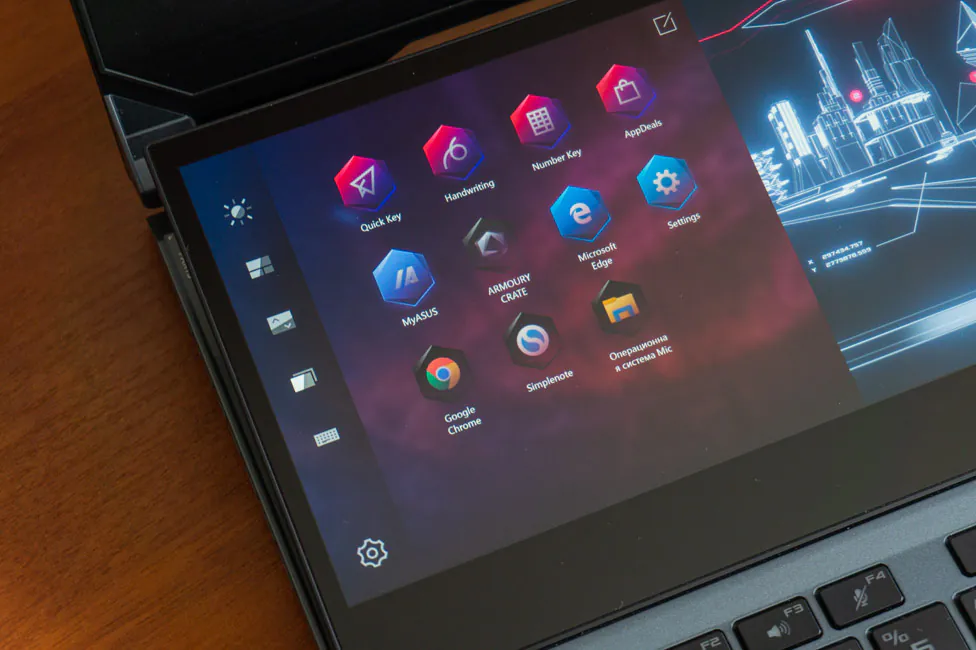
By default, there are several programs, some of them cannot be removed from quick access. These are Quick Key, Handwriting, Number Key, and AppDeals. In addition, MyASUS and Armory Crate, but they can be removed. In Quick Key, there are hot keys, like Ctrl + C/V/Z/X/A. You can add your own and group them as you like. In addition, for convenience, the panel can be moved to the bottom of the ScreenPad Plus and it will be displayed on top of active windows.
Handwriting is typical, but not very comfortable without a stylus. AppDeals is tab in the MyASUS utility with applications that support work with the second display.
MyASUS also has device information, FAQs, system diagnostics, software and driver updates, and charging mode settings.
In the side menu on the left you can adjust the brightness of the additional screen, group open applications to quickly launch them in one click, swap the contents of two screens. There is a separate menu of applications launched on the second screen for easy navigation between them. And the last thing – you can lock the keyboard.
In the settings you can again adjust the brightness, change the background on the second screen, set the default size of application windows, hide the menu button. Also enable automatic window resizing and a small context menu when dragging windows. There is a power saving mode, changing the resolution of the second display and other items.
Sound and wireless modules
ASUS ROG Zephyrus Duo 15 comes with 4W stereo speakers. The existing smart amplifier, according to the manufacturer, eliminates distortion and adjusts the output power to avoid overloading the speakers. In practice, the sound is really very good – loud, clear and deep. You can listen to music from the built-in laptop speakers.

The audio output was also improved: it is built on the basis of the ESS Saber digital-to-analog converter, supports Hi-Res Audio audio formats, so the laptop sounds great through external speakers or headphones.
Those who are not satisfied with the default sound can always use the Sonic Studio 3 utility. There you can select one of the equalizer presets or adjust it yourself. Plus, you can use Sonic Studio and adjust each of the presets (music, movies, games, speech). There are also settings for recording audio with noise reduction, volume stabilizer, reverb cancellation and equalizer.
In general, everything is fine with wireless modules, there is an Intel Wi-Fi 6 module with Gig+ technology (802.11ax) on board, which provides high speed with minimal delays. Read more in our article on Wi-Fi 6. Bluetooth 5.0 module works as expected.
Read also: ASUS ZenBook Pro Duo UX581GV review – Unique Laptop of the Future
Keyboard and touchpad with NumberPad
The fact that the keyboard is shifted down is clear. The keyboard unit itself, together with the touchpad, are deep enough to exclude their contact with the display cover when closed. The keyboard consists of 83 keys with a familiar, quite comfortable layout, but with its own characteristics. The top row is traditionally reduced in height, there are long Shifts on both sides, one-story Enter and compact arrows – nothing special here.

The space bar is thicker in the left, and the Print Screen key is not on top, but below, between the right Alt and Ctrl. Delete and Insert are combined, and PageUp/PageDown and Home/End are tied to arrows as usual, but you need to switch their mode of operation with one of the additional buttons above the touchpad panel.
There, in addition to this very arrow mode selection button, we have a quick launch key for the Armory Crate utility, ROG ScreenPad Plus and a power key. The latter, by the way, has a much tighter stroke, so it won’t be easy to accidentally press it.

The key travel is 1.4 mm, which is sufficient for typing texts and for games. The keyboard is capable of handling any number of simultaneous presses and has good RGB lighting with three levels of backlighting.
The keyboard is really pleasant to work with, especially with the included stand. It differs greatly from the alternative bundled with the ZenBook Pro Duo in that it is made of rubber, not plastic. It is softer and more stable on the table.
A vertical touchpad in a similar format is not out of place, because it will be more convenient to move the cursor from the main screen to the additional screen on the elongated panel. The surface of the touchpad is glass, and the finger glides on it effortlessly.
ASUS ROG Gladius II Origin Gaming Mouse
I will try to tell you as briefly as possible about the bundled mouse. This is a large, asymmetrical wired gaming mouse for right-handed users. The mouse is equipped with Aura Sync backlight, optical sensor with sensitivity up to 12000 DPI, 50 G acceleration and 250 IPS speed. The switches are OMRON D2FC-F-K with a declared resource of 50 million clicks.
Between the mouse buttons is a backlit wheel with a rubberized ring, and below there is a glossy DPI toggle button and an illuminated ROG logo. On the left there are two glossy side buttons, as well as a large rubberized panel with a texture. They provide an excellent grip, but the latter is not the lightest and weighs 110 grams excluding the cable. In front, there is a microUSB port (why not Type-C, I ask) and yes, the cable itself is detachable, with gold-plated plugs.
In addition to the wheel and logo, the strip at the bottom is also highlighted and the mouse backlight can be synchronized with the keyboard backlight.
Read also: Lenovo ThinkPad T495 review — Very businesslike laptop
Equipment and performance
Now let’s move on to the ASUS ROG Zephyrus Duo 15 hardware, and as I noted at the very beginning of the story, I had a top-end configuration for testing. Intel Core i9-10980HK, NVIDIA GeForce RTX 2080 Super Max-Q, 32 GB of RAM and two SSD drives of 1 TB each.
Intel Core i9-10980HK is a 10th generation Comet Lake processor, based on 14nm, which has 8 cores in its composition, capable of operating in 16 threads. The base clock speed is 2.4 GHz, and the maximum clock speed with Turbo Boost technology can reach 5.3 GHz. Cache memory is 16 MB Intel Smart Cache, nominal TDP value is 45 W. Intel UHD Graphics 630 with frequencies from 350 to 1250 MHz.
The NVIDIA GeForce RTX 2080 Super graphics card in the Max-Q design means lower power consumption and heat dissipation due to lower frequencies, compared to the mobile RTX 2080 Super. The TU104 video processor has 3072 active cores and 975-1330 MHz in ROG Boost mode, the amount of memory is 8 GB of GDDR6 type, and the bus width is 256 bits. The card is based on the Turing microarchitecture, with real-time ray tracing and AI support.
There is 32 GB of RAM, DDR4 with a frequency of 3200 MHz; it works in dual-channel mode. Half of the memory, 16 GB, is soldered to the motherboard, and the only available slot has a bracket for the same 16 GB (Micron 16ATF2G64HZ-3G2J1). It can be replaced if necessary, with a total of 48 GB of RAM.
The storage capacity in this configuration is represented by two SAMSUNG MZVLB1T0HBLR-00000 drives with a capacity of 1 TB each, which are connected via the PCIe x4 bus and are combined into a RAID0 array of increased performance. The speeds are amazing.
I think it’s not worth telling how cool this hardware is and what it is capable of (everything). Below I will just give screenshots from the main benchmarks, but in the next section we will analyze the behavior of the components under load.
Cooling and overheating
Such powerful hardware is simply has to receive no less powerful cooling. ASUS ROG Zephyrus Duo 15 uses an active aerodynamic cooling system called AAS Plus. As has been said many times, the air intakes are located behind the additional screen. Thanks to the height of 28.5 mm between the screen and the grilles, the manufacturer managed to increase the air flow by 30%.

Instead of the classic thermal paste, a liquid metal thermal interface from Thermal Grizzly is used, which, according to the company, reduces the temperature by 14 degrees, compared to the conventional thermal pastes. Liquid metal is applied using special equipment, so that the probability of any mistake and therefore incorrect application is minimal.
Four copper radiators with fins 0.15 mm thick remove heat, which made it possible to increase their number to 252, which also influenced the airflow resistance – in such radiators it is lower. Also, 5 heat pipes are inside the laptop case, cooling not only the CPU and GPU, but also the elements of their power systems.
And, of course, there are three modes of operation: quiet, balanced and turbo. You can switch between them both in the Armory Crate utility and with the Fn + F5 keyboard shortcut. The modes regulate not only the speed of the fans and therefore the level of their noise, but also the frequency of the CPU. The system also remembers the brightness level of the main display.
It is declared that in quiet mode the laptop does not emit more than 35 dB, in balanced mode no more than 40 dB, and in turbo mode no more than 46 dB. In real life, the laptop is almost inaudible in quiet mode. Balanced mode makes more noise, but not too much, but in the turbo the device makes quite a lot of noise.
Now for frequencies and temperatures. I used the AIDA64 stress test. Quiet mode throughout the test kept the processor frequencies at 2.1-2.2 GHz, and the temperature of the processor cover averaged 80.4°, with a maximum recorded at 86°.
The efficiency mode is somewhere between quiet and turbo (2.5-2.6 GHz). Average heating is 87.3°, and the maximum is 95°, which is a lot.
In turbo mode you can get the maximum performance of the Intel Core i9-10980HK at 100% load at 2.9-3 GHz. The average temperature was 88.5°, no more than 95°.
Temperatures seem to be pretty standard, but the laptop case itself gets quite hot. Touching some of its parts may not comfortable after some time. It is most noticeable on the lower part of the second display.
Testing in games
Below is a table with some demanding (and not so) games, and average FPS in FHD and UHD resolutions. You should focus primarily on Full HD resolution, because UHD is still demanding on resources, and even ASUS ROG Zephyrus Duo 15 with its top-end hardware will not be able to provide 60+ FPS on the highest graphics settings.
But you can always lower some parameters. In the titles below I set all the settings to their extreme values and activated all the effects.
| Title | Average FPS in Full HD | Average FPS in UHD |
| Counter-Strike Global Offensive | 265 | 150 |
| DiRT Rally 2.0 | 95 | 40 |
| DOOM Eternal | 191 | 54 |
| GTA 5 | 71 | 27 |
| Just Cause 4 | 96 | 37 |
| Kingdom Come Deliverance | 53 | 24 |
| Metro Exodus | 54 | 30 |
| Shadow of the Tomb Raider | 70 | 33 |
| The Witcher 3: Wild Hunt | 90 | 38 |
In short, the ASUS ROG Zephyrus Duo 15 can handle 99% of games on ultra graphics settings. Full HD, of course.
Read also: ASUS TUF Gaming A17 review – Gaming laptop with new Ryzen 7 4800H CPUs
Battery life
The battery life of ASUS ROG Zephyrus Duo 15 is nothing special, but that should come as no surprise considering the hardware. This is a laptop that’s reasonably compact, which means you can take it with you, but it will not work for a long time. Its battery with a capacity of 90 W*h is enough for an hour or two of typing and web surfing, but no one buys such a device for these tasks.

For the battery life test, as usual, I turned to the Modern Office test from PCMark 10. The test was carried out in the “Efficiency” performance mode (balanced, in other words) with the brightness of both screens at 50% and the laptop lasted only 1 hour and 19 minutes. Just to remind you, the test simulates active office work. Professional resource-intensive software, and even more so games might kill the battery in 30 minutes.
Read also: ASUS ZenBook 13 (UX325) review – New Member of the ZenBook Family
Nevertheless, let me remind you once again that it is possible to power a laptop from a compact power supply via USB-C.
ROG Armory Crate Utility
The proprietary Armory Crate utility is designed to manage system parameters, monitor system status in real time, adjust keyboard backlighting and other compatible devices.
The main window of the program contains information about the use of the processor and video card, as well as the occupied amounts of RAM and ROM. There you can also see the fan speed and noise level. Manual selection of performance mode is available. The following options are available in the system configuration section: blocking the Win key, disabling the launch of the utility by pressing the ROG key, selecting the GPU mode (integrated/discrete or only discrete), disabling the touchpad, power-on sound and sensor on the second screen. Then there is a Game Launcher for quickly launching games and configuring system programs (changing the backlight mode, color rendering, accelerating games with AI, sound parameters). All these settings can be combined into profiles and you can quickly switch between them.

The “Device” section is divided into several: system, macro, and compatible peripherals. In the system, you can forcibly stop any processes during the game, change the keyboard backlight, update the firmware and monitor the resources used. The included ASUS ROG Gladius II Origin mouse and macros are configured here.
In AURA Sync, you can synchronize the backlight of all devices, in GameVisual you can change the screen color profile and temperature, calibrate the colors. Game Library launches games using previously set system parameters. Settings profile is for those same profiles.
Verdict

ASUS ROG Zephyrus Duo 15 is a very cool, powerful and unusual machine. This is a laptop without any significant flaws, aside from the high price tag. But history, as you know, repeats itself, and it’s ASUS ZenBook Pro Duo UX581GV all over again. At the moment the laptop has no rivals and is worth every penny.
Subscribe to our accounts:












